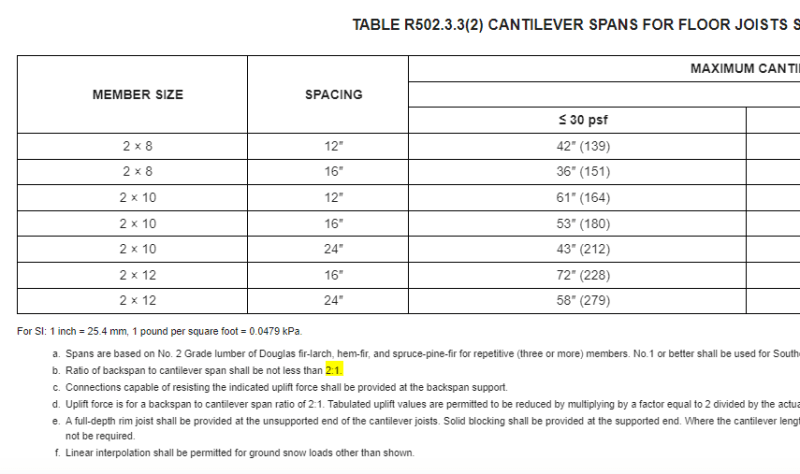anchorengineer
Structural
We have a project where the existing 8ft cantilevered triple LVL beams for a balcony have deteriorated. These are main beams and the balcony joists are perpendicular to these. We want to cut the main beams at the face of the building and install flitch plates to replace their strength. We will extend the flitch plates back into the building and use pressure treated blocking to fill the space between the plates on the exterior. The rule of thumb is to extend the inboard cantilevered sister beams (flitch plates in this case) 2x the length of the cantilever. The balcony is 8ft wide which puts us 16ft into the building. Does anyone know of a more precise method of analysis? We also thought about extending the plates the distance until the moment due to the cantilever equals zero, but since we have resisting NE snow and it's big enough for 100 psf LL it is long and seems extreme. Do we focus mainly on uplift deflections? Thoughts?
Thanks!
Thanks!

